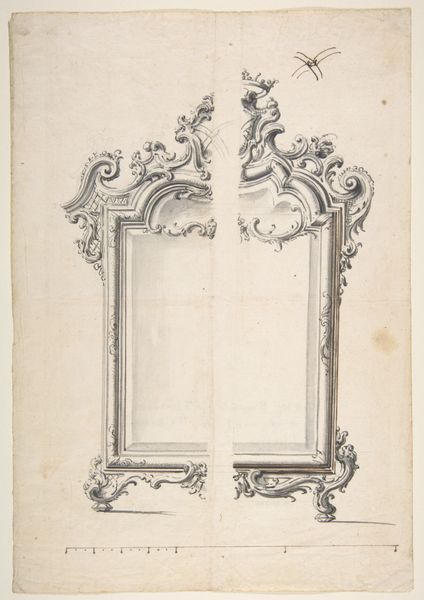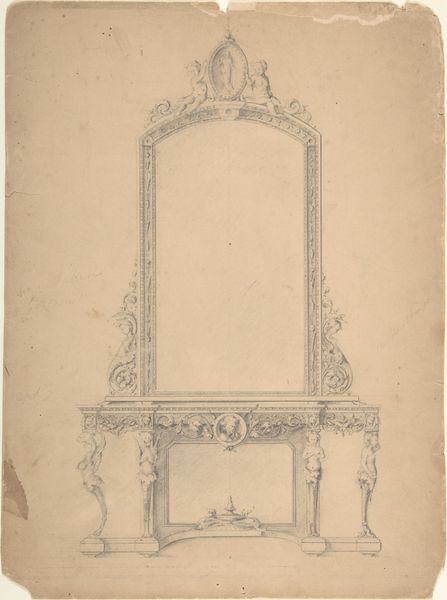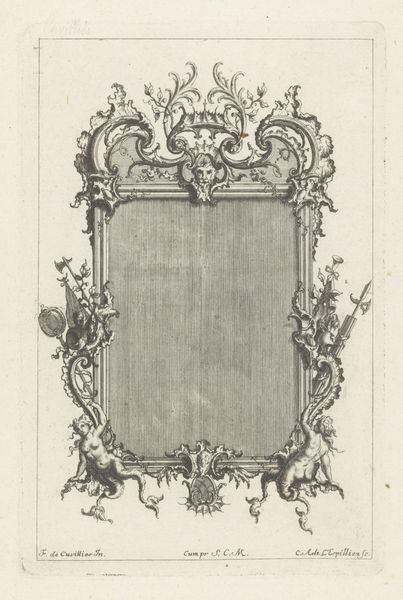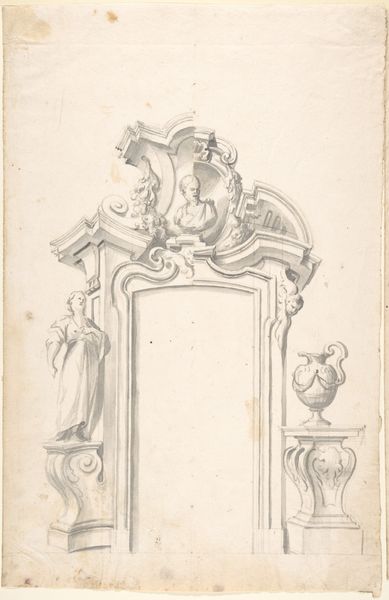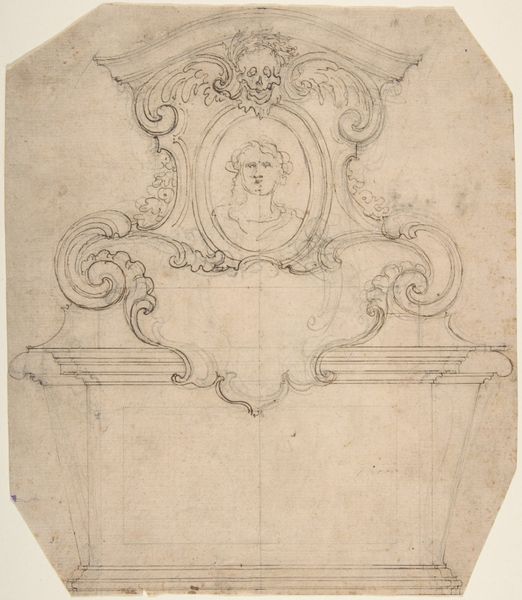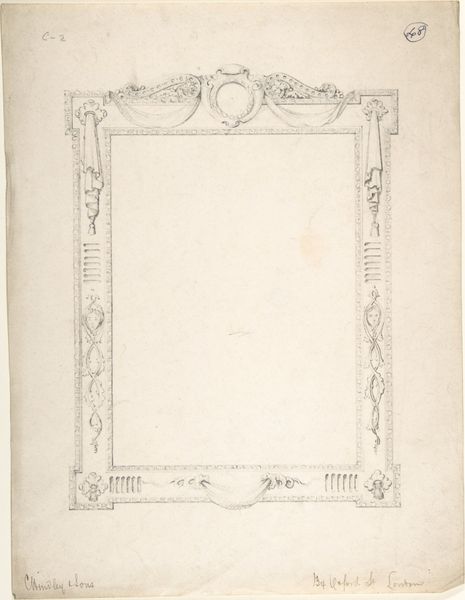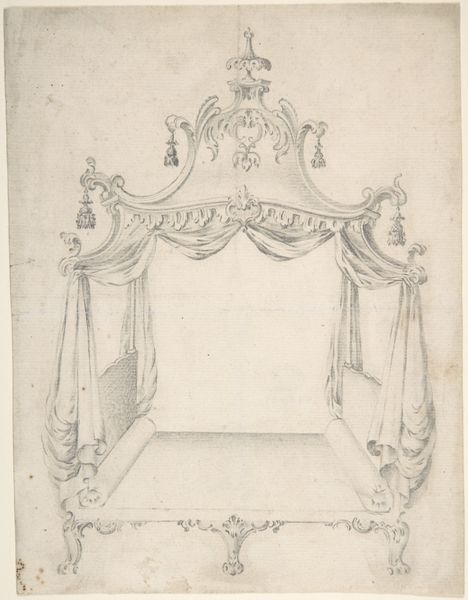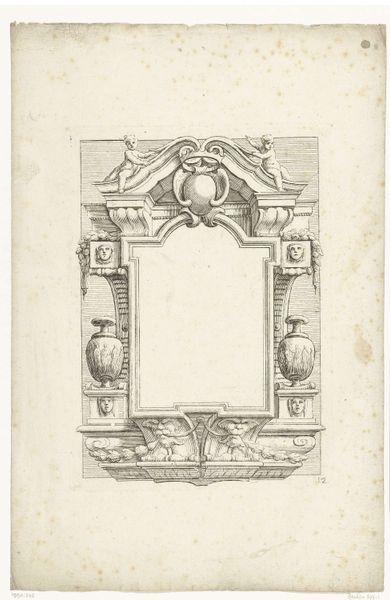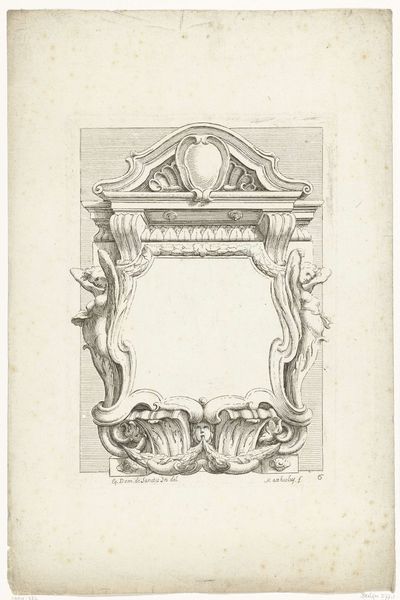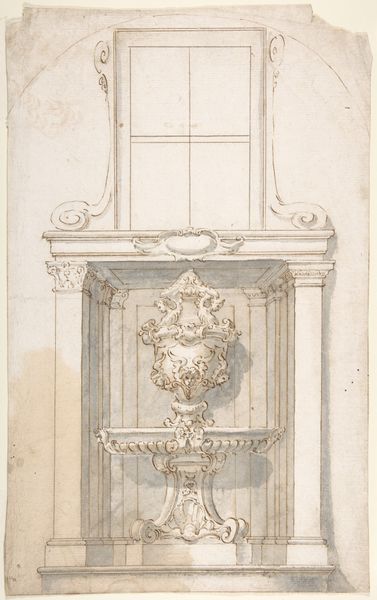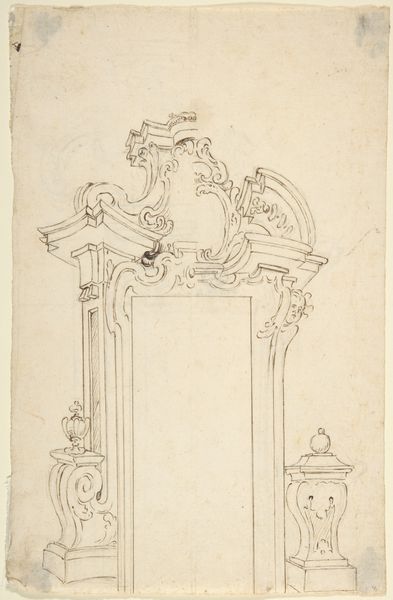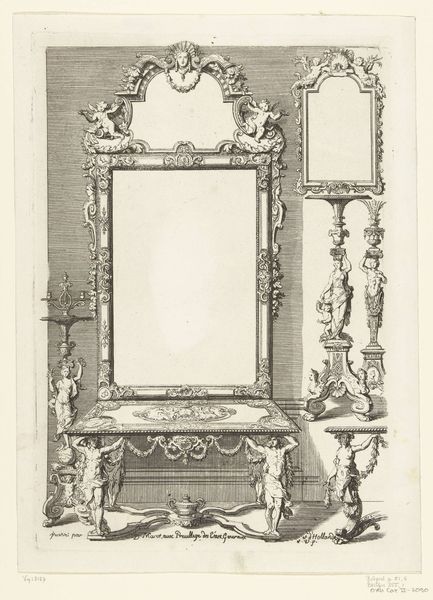
drawing, print, pencil
#
drawing
#
allegory
#
baroque
# print
#
form
#
pencil
#
academic-art
Copyright: Public Domain
Curator: Here we have "Design for Ecclesiastical Picture Frame," dating from between 1640 and 1660, currently held at The Metropolitan Museum of Art. It’s a detailed drawing rendered in pencil, likely intended as a print. Editor: It has such a whimsical, almost ephemeral feel. The lightness of the pencil strokes gives it an airy quality, even though the subject matter – a frame for a religious picture – suggests something more weighty. Curator: Exactly. Considering the social and institutional context, this design embodies the Baroque aesthetic of the era. Ecclesiastical art during this period often served as propaganda, reinforcing the power of the church through grandeur and allegory. Notice the cherubs and the crown – blatant symbols of divine authority. Editor: Absolutely. And the very emptiness within the frame itself speaks volumes, doesn’t it? It's a deliberate space awaiting an image that undoubtedly carried ideological weight, something designed to elicit a specific emotional response from the viewer and reinforce narratives. The Baroque, even in frame design, did nothing by accident. Curator: Precisely. The anonymous nature of the artist further highlights this. The individual creator is less important than the message the frame is designed to amplify. It makes me wonder, how often are the designers and makers of propaganda obscured to amplify its impact? Editor: That anonymity feels very intentional now that you point it out. Think about how academic art of the era elevated certain subjects, essentially deifying them while obscuring the labor, politics, and identities intertwined with creating such artworks and their surrounding frames. The frame becomes almost as powerful as the art it holds, maybe even more so. Curator: Indeed, these details contribute to its success. These elements also show us a perspective on the visual and political landscape. And though 'just' a frame, it reveals an intense confluence of cultural power. Editor: Reflecting on the way objects frame and reinforce certain stories is a vital way of deconstructing meaning, of revealing narratives of power, which allows us to approach a picture – or its vacant, expectant space – with a renewed sense of critical observation.
Comments
No comments
Be the first to comment and join the conversation on the ultimate creative platform.
